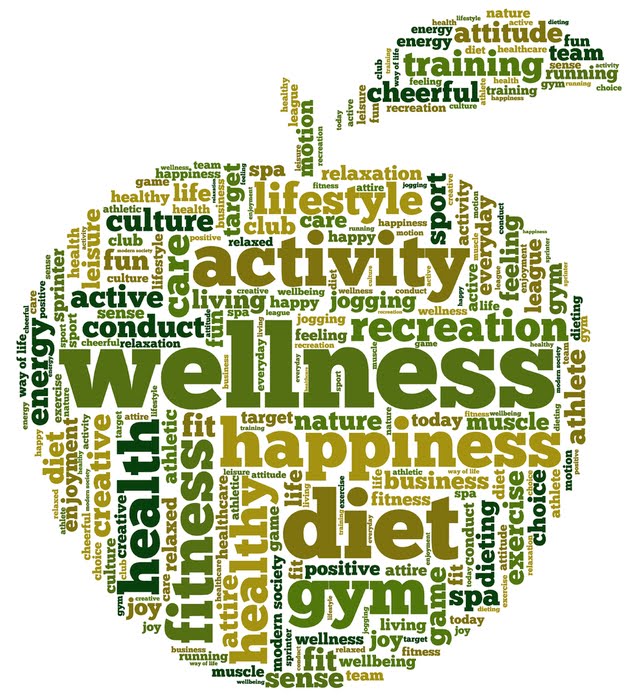Learn free or low cost ways to be healthy.
Anytime is a good time to save money, be healthy, and be informed. Making healthy choices can help prevent injury, disease, and disability. Stay healthy on the cheap by including smart choices that are low cost or free. Many are simple too.
Everyday Health
Quit smoking.
Smoking is expensive, and that doesn't include the long-term costs associated with chronic disease and other problems that can develop later. Quit now.
Smoking is expensive, and that doesn't include the long-term costs associated with chronic disease and other problems that can develop later. Quit now.
Need affordable health care?
Many programs are available through federally-funded and state sponsored programs that are free or low-cost. They include some hospitals, health centers, public health departments, and clinics. Some programs focus only on a specific health issue or screening program. Also, the health reform law will give many Americans health care and services they may not have been able to afford in the past. Some benefits are already available and others will become available by 2014.
Many programs are available through federally-funded and state sponsored programs that are free or low-cost. They include some hospitals, health centers, public health departments, and clinics. Some programs focus only on a specific health issue or screening program. Also, the health reform law will give many Americans health care and services they may not have been able to afford in the past. Some benefits are already available and others will become available by 2014.
Subscribe to text4baby. Get free health text messages for pregnant and new moms.Text4baby is a free service that provides pregnant women and new moms with free text messages each week on pregnancy and baby care health tips. These messages are timed to a woman's due date or the baby's date of birth. Sign up for the service by texting BABY to 511411 (or BEBE in Spanish) to receive free SMS text messages each week, timed to your due date or baby's date of birth.
Vaccines for Uninsured Children.
The Vaccines for Children (VFC) Program offers vaccines at no cost for eligible children through VFC-enrolled doctors. Find out if your child qualifies. Vaccinating on time means healthier children, families and communities
Avoid unnecessary medicines.
Antibiotics can kill bacteria but not viruses. Antibiotics and cough and cold medications will not cure most colds, coughs, flu, sore throats, or runny noses. These medicines can sometimes cause more harm than good. Save your money.
- Information for Consumers
 (FDA).
(FDA).
Nutrition and Physical Activity
Be active.Nothing fancy, expensive, or complicated required to be active. Come as you are. Regular physical activity may help lower your risk for many diseases, including cardiovascular disease, type 2 diabetes, colon and breast cancers, and osteoporosis. It also helps to control weight; contributes to healthy bones, muscles, and joints; and reduces falls among older adults. Adults should be active for at least 2½ hours a week. Include activities that raise your breathing and heart rate and that strengthen your muscles.
Beans instead of meat.
Use canned or dried beans in recipes instead of meat, which is more expensive. Traditional recipes made with meat such as chili, soups, and Mexican dishes like burritos are delicious with beans.
Breastfeed.
Both babies and mothers gain many benefits from breastfeeding. Breast milk is free, is easy to digest, and contains antibodies that can protect infants from infections. Women who breastfeed may also have lower rates of certain breast and ovarian cancers.
Buy canned or frozen fruits and veggies.
Depending on the recipe, canned and frozen veggies can work just as well as the fresh alternatives. They're also cheaper and last longer than fresh ones.
Buy seasonal.
Purchase fresh fruits and vegetables in season when they tend to be less expensive. Blend the fruit into a smoothie to take with you on the go!
Cut your own fruits and vegetables.
Buy whole fruits and vegetables instead of pre-cut or pre-packaged forms, which tend to be more expensive.
Drink water. Rethink Your Drink. Choosing water keeps you from drinking something else that may be loaded with calories and sugar. People who drink sugar-sweetened beverages tend to consume more calories. For a quick, easy, and inexpensive thirst-quencher, carry a water bottle, and refill it throughout the day. Make water more appealing by keeping it cold in the fridge or by adding a slice of fruit for flavor. Drinking fluoridated water provides protection against tooth decay. Fluoridation is the least expensive way to deliver the benefits of fluoride to all residents of a community. Tap water is fine.
Grow your own food.
Growing your own vegetables is a budget-friendly option for getting your daily dose of colorful produce. A novice gardener can produce a variety of inexpensive fresh vegetables that can be included in any summer meal.
Have an "ingredient" potluck.
Do you have a favorite healthy recipe? When you invite your friends to come over, ask them to bring one of the ingredients, and then make the dish together!
Limit food portions.
Take control of the amount of food that ends up on your plate. If eating out, split an entrée with a friend. Or, ask for a "to-go" box and wrap up half your meal as soon as it's brought to the table.
Store brands - a good deal.
Generic and store brands tend to cost less than name brands and have similar taste and nutrition.
Use coupons.
Use coupons, and look in grocery store circulars for discounts on fruits and veggies that you need.
http://www.cdc.gov/Features/BudgetForHealth/












 transports fatty acids into mitochondrial membranes, where they are converted into ATP.
transports fatty acids into mitochondrial membranes, where they are converted into ATP. 

 Taking a daytime cat nap for up to an hour may be good for your heart and its reaction to psychological stress, new findings suggest.
Taking a daytime cat nap for up to an hour may be good for your heart and its reaction to psychological stress, new findings suggest.